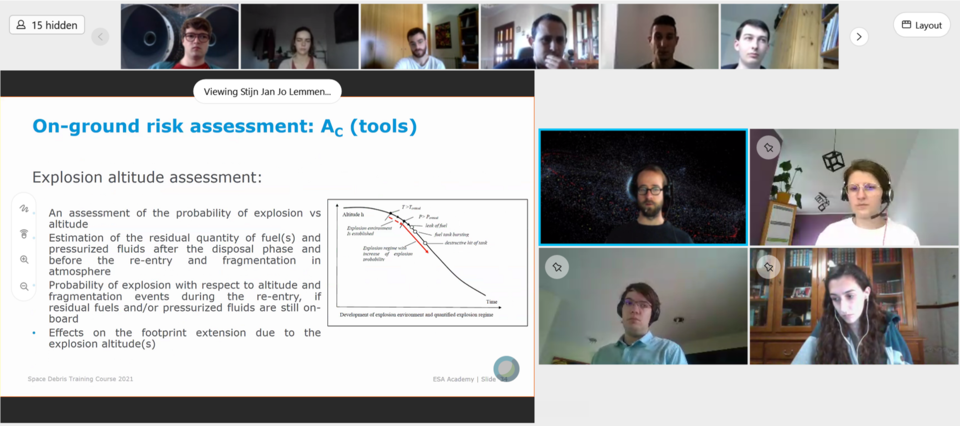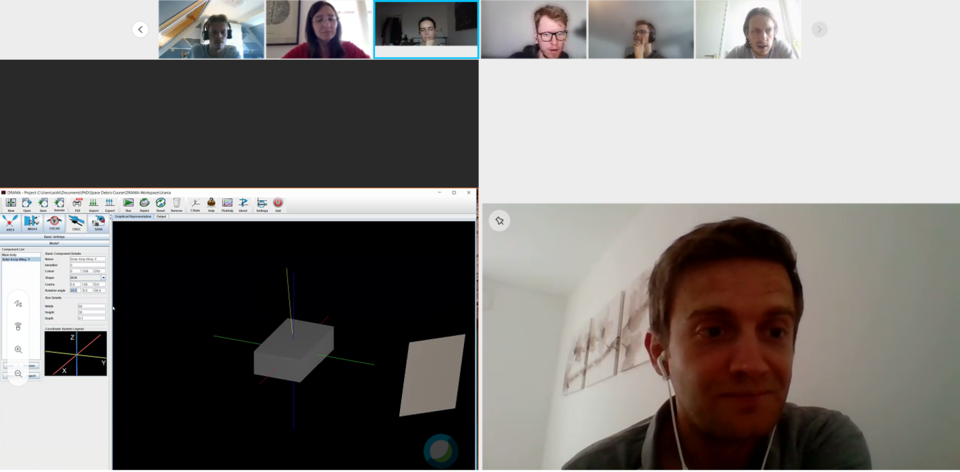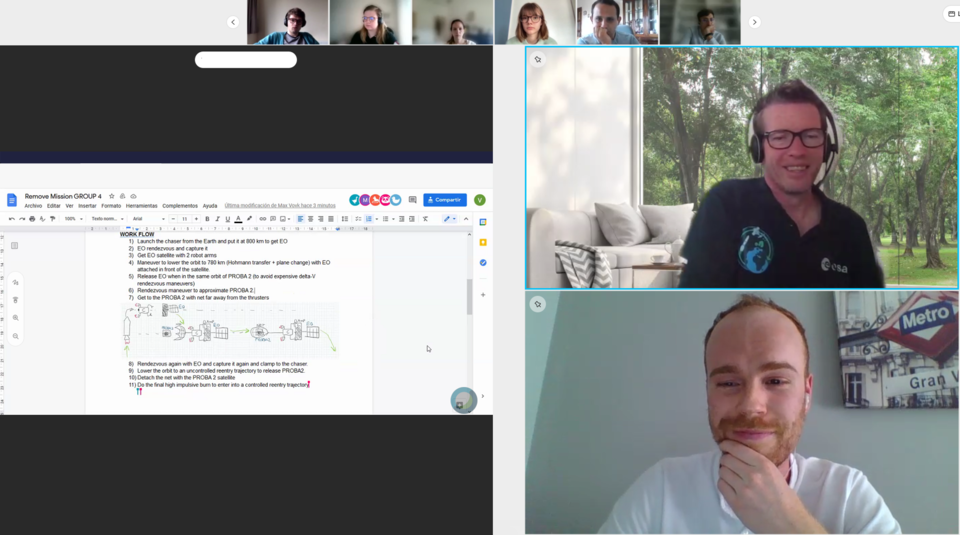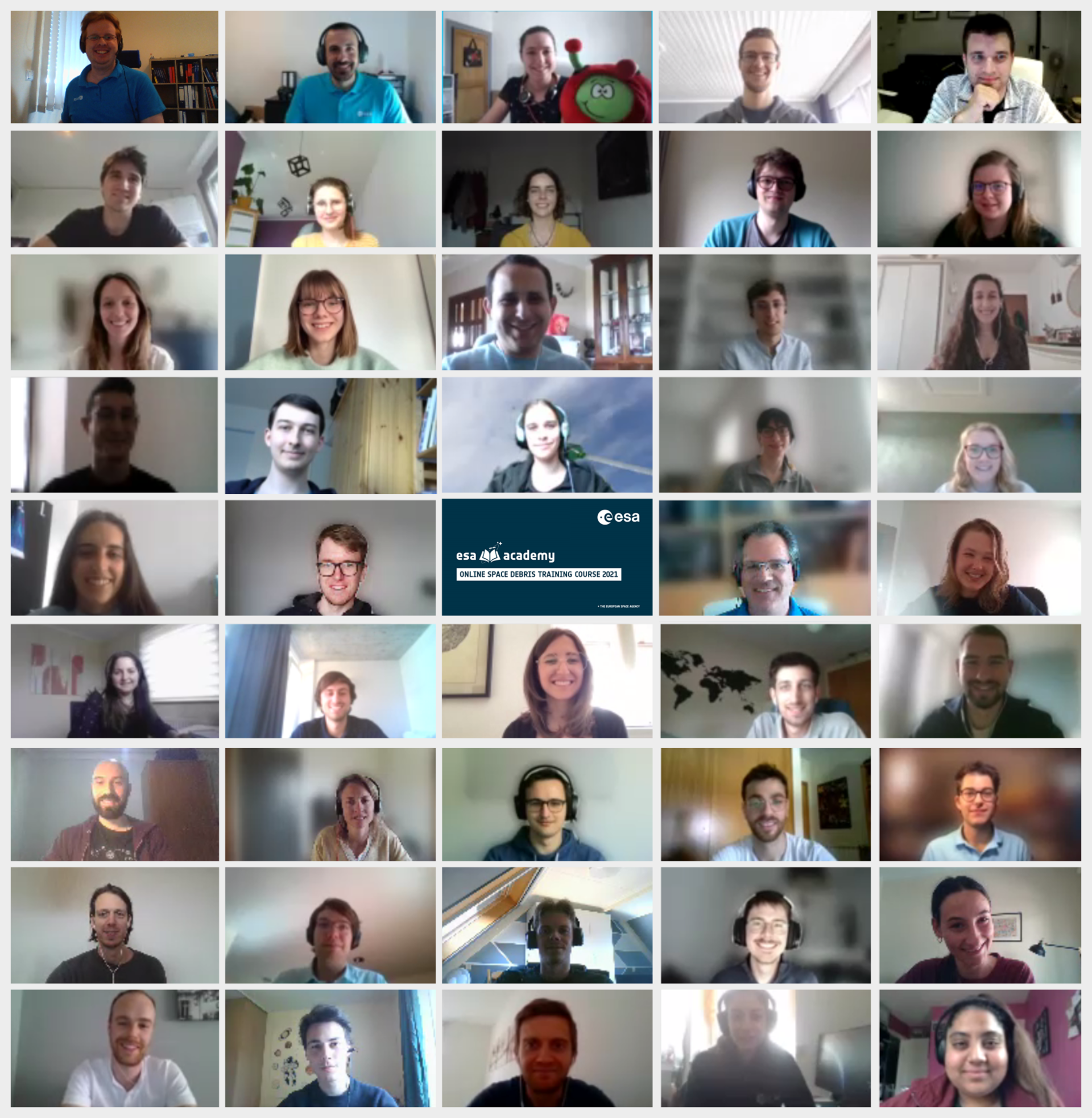Students log on for ESA Academy’s Online Space Debris Training Course 2021
From 17 to 28 May 2021, 36 university students from 13 different ESA Member States and Canada booted up their computers to participate in ESA Academy’s Online Space Debris Training Course 2021.
A collaboration between ESA’s Education and Space Debris Offices and delivered by ESA and external experts -- all specialists in the field -- the goal of this training course was to give the participants an introduction to the concept of space debris: why is it a problem, and what can be done to help?

“These two weeks have been a fantastic experience,” said an Italian student from Parthenope University of Naples. “To learn about space debris directly from the ESA people, who collaborate on it, was an incomparable opportunity for me. A full immersion in the subject gave us the awareness about how a compliant space environment is essential for the future.”
The first week began with an introduction to space debris. The forces acting on a space object were explained, followed by an overview of the space debris environment, what it comprises and how it evolved to the current stage, and the dangers it contains. Lessons on legal and regulatory aspects proved enlightening, and certainly gave the students a different perspective. Lectures then moved on to the topic of mitigation, investigating why this is important, and technologies for passivation and deorbiting. A lecture on the future evolution of the space debris population showed the influence of successful implementation (or not) of these mitigation measures as well as other factors such as future launch rates. The ESA experts then discussed space surveillance, a topic that many students found to be particularly valuable. The first week finished with a deep-dive into collision avoidance, and the challenges of operating in an environment with the perils of space debris.
The second week started with a fascinating presentation on protection and shielding, before segueing to re-entry, beginning with the aerothermodynamics that rule the journey of an object into Earth’s atmosphere, then simulating this re-entry for various satellites. On-ground risk estimation for these re-entries was also discussed. The final two days of the course were dedicated to the future of the space debris problem, with an overview of active debris removal, and design for demise, which sees spacecraft specifically designed to optimise their destruction during re-entry.

Throughout these two weeks, the technical lectures were complemented by a set of dedicated group project sessions. Using MASTER and DRAMA software, developed and used by the Space Debris Office and available to everybody, student groups worked on:
- Introduction to ESA tools and flux assessment
- Disposal strategies
- Collision avoidance and damage assessment
- Re-entry and casualty risk assessment
Another session focused on the high-level mission and operations concept design of an active debris removal mission using approaches of system engineering and concurrent design.

“This course not only offered many exciting lectures by experts of the field but also highly interesting and engaging group project sessions,” explained a German student from the Technical University of Darmstadt. “Working on the diverse tasks about space debris in an international team was a great learning experience and helped a lot in deepening the understanding.”
The students were supported during their group project sessions by the ESA experts, imparting knowledge and facilitating discussions. The experts were impressed by the motivation and dedication shown by each group. After more than a year living with COVID-19 restrictions, the participants particularly valued the group sessions as an opportunity to interact with other students that share similar interests.
At the end of the training course, the students were evaluated through an online test. Those that actively participated during the two weeks, and passed the test, will receive a certificate of participation and course transcript allowing them to request ECTS credit(s) for their participation for their respective universities.
“The Space Debris Training Course has been a wonderful experience from all points of view,” concluded an Italian student from Politecnico di Milano. “It has been an opportunity to gain deeper knowledge of such a relevant topic. Lectures and group sessions have been tailored to directly put in practice the theoretical concepts. Overall, it boosted my motivation towards space science and space debris!”
- For more information about the space debris topic, you can visit: http://www.esa.int/Safety_Security/Space_Debris
- To find more information about current and future ESA Academy training opportunities, please check: https://www.esa.int/Education/ESA_Academy/Portfolio_of_ESA_Academy_training_sessions
- Contact: tlp@esa.int


